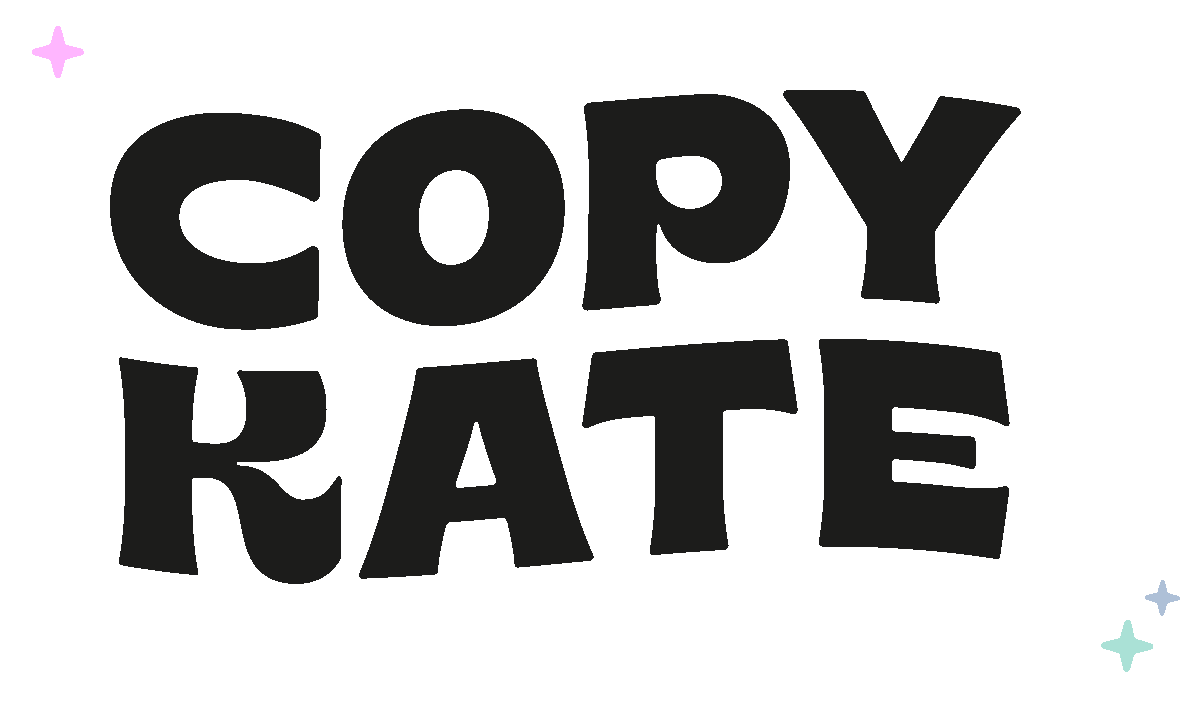The importance of truly understanding your customer [+ free download]
Here’s something a lot of businesses miss: you can’t sell to people you don’t understand.
You can know your product inside out, have the best offer in your industry, even hire the fanciest design team but if you don’t deeply understand the humans you’re trying to reach, your marketing will always feel like it’s missing something.
That “something” is connection. And connection is what turns browsers into buyers, and buyers into return buyers.
Why Audience Understanding Comes Before Everything Else
Most people jump straight into the fun part: writing the copy, designing the visuals, running the ads.
But that’s like trying to bake without knowing what you’re making. You end up guessing the ingredients.
Understanding your audience isn’t just a box to tick; it’s the foundation every piece of communication sits on. It tells you how to talk, what to say, what to skip, and how to make someone feel seen.
When you know your audience well, you stop shouting into the void. You start speaking directly to someone, not at them.
The Difference Between “Knowing Of” and “Knowing”
Here’s the trap a lot of businesses fall into: they think they know their audience because they can describe them on paper.
Age range? Check.
Location? Check.
Job title? Check.
But those details don’t tell you what really matters. They don’t tell you what someone cares about, what frustrates them, what they secretly wish someone would fix, or what language they naturally use when they talk about those things.
Demographics help you find people. Empathy helps you connect with them.
Listen Before You Write
The best copywriters aren’t the ones with the biggest vocabularies. They’re the best listeners.
Before you can write something that will deliver any results, you have to pay attention to how your audience actually speaks. Where do they hang out? What words do they use when they talk about their problems? What makes them laugh? What annoys them?
Here are a few places to start your research:
Customer interviews. A handful of conversations can tell you more than months of guessing. Ask open questions and let people talk.
Online reviews. Read what people say about products like yours (and your competitors). Their words are gold.
Community spaces. Forums, Facebook groups, Instagram comments, Reddit threads, anywhere people talk freely. You’ll see what they care about, not what they think they should care about.
Support tickets or DMs. The questions people ask over and over again often point to the biggest messaging gaps.
Social listening like this shows you the world through your audience’s eyes, so you can start to create content based on facts not assumptions.
Speak Their Language (Literally)
If your customers say “I feel overwhelmed,” and your headline says “Experience seamless optimisation,” you’ve lost them.
Language builds trust.
When someone reads a line that sounds like something they’d say, they relax. They feel understood. That’s the moment connection begins.
Good copy doesn’t sound “professional.” It sounds familiar. It feels like a conversation you’ve been wanting to have.
Here’s a quick gut check when you’re writing: would your audience actually say this out loud? If not, simplify it.
Go Deeper Than Pain Points
We’ve all heard “speak to their pain points.”
Sure, but that’s only half the picture. People don’t just buy to solve problems. They buy to feel something.
They want relief, pride, excitement, recognition, confidence, belonging. When you understand not just what your audience struggles with but also what they want more of, your messaging shifts from “selling” to “connecting.”
For example:
A time management app isn’t just about “saving time.” It’s about feeling calm at the end of the day.
A skincare brand isn’t only about “reducing acne.” It’s about feeling confident walking into a room.
A coaching program isn’t just about “reaching goals.” It’s about believing change is actually possible.
Trust me: when you really understand how your customer wants to feel, your entire marketing strategy will get so much easier.
Avoid Marketing to a Mirror
Another easy and common mistake I see all the time: creating for people who think like you.
It’s natural, we all have our own preferences and habits.
But if you assume your audience sees the world the same way you do, you’ll write copy that speaks to your reflection instead of your reader.
This is where research keeps you honest. You might discover that what motivates you doesn’t motivate them at all. Maybe you care about craftsmanship, but your audience actually cares more about speed and affordability. Maybe you value clever wordplay, but they just want clarity.
When you realise that difference, your messaging stops being self-centered and starts being audience-centered. That’s the shift from “we want to tell you something” to “we understand what you need.”
Build Personas That Actually Mean Something
This is where a lot of people reach for an outdated customer persona template and end up filling it with surface-level nonsense.
You don’t need to invent a character named “Marketing Mary” who loves iced coffee and podcasts. You need to understand how real people think, talk, and make decisions.
A strong persona captures:
What they’re trying to achieve
What’s standing in their way
How they describe that struggle
What they need to believe in order to take action
That’s the kind of detail that helps you write copy your customer will actually read and take action on.
Ready to Get to Know Your Audience?
If you’re ready to stop guessing and start creating targeted “I-read-your-mind” content, download my FREE workbook: The CopyKate Customer Persona Workbook.
Inside, you’ll learn how to:
Go beyond basic demographics
Uncover the real motivations behind buying decisions
Find and use your audience’s own words in your copy
Build detailed, useful personas that actually guide your marketing
Plus, I’ll share bonus tips on how to put your new customer persona into practice.
What are you waiting for? Get your free copy now!
